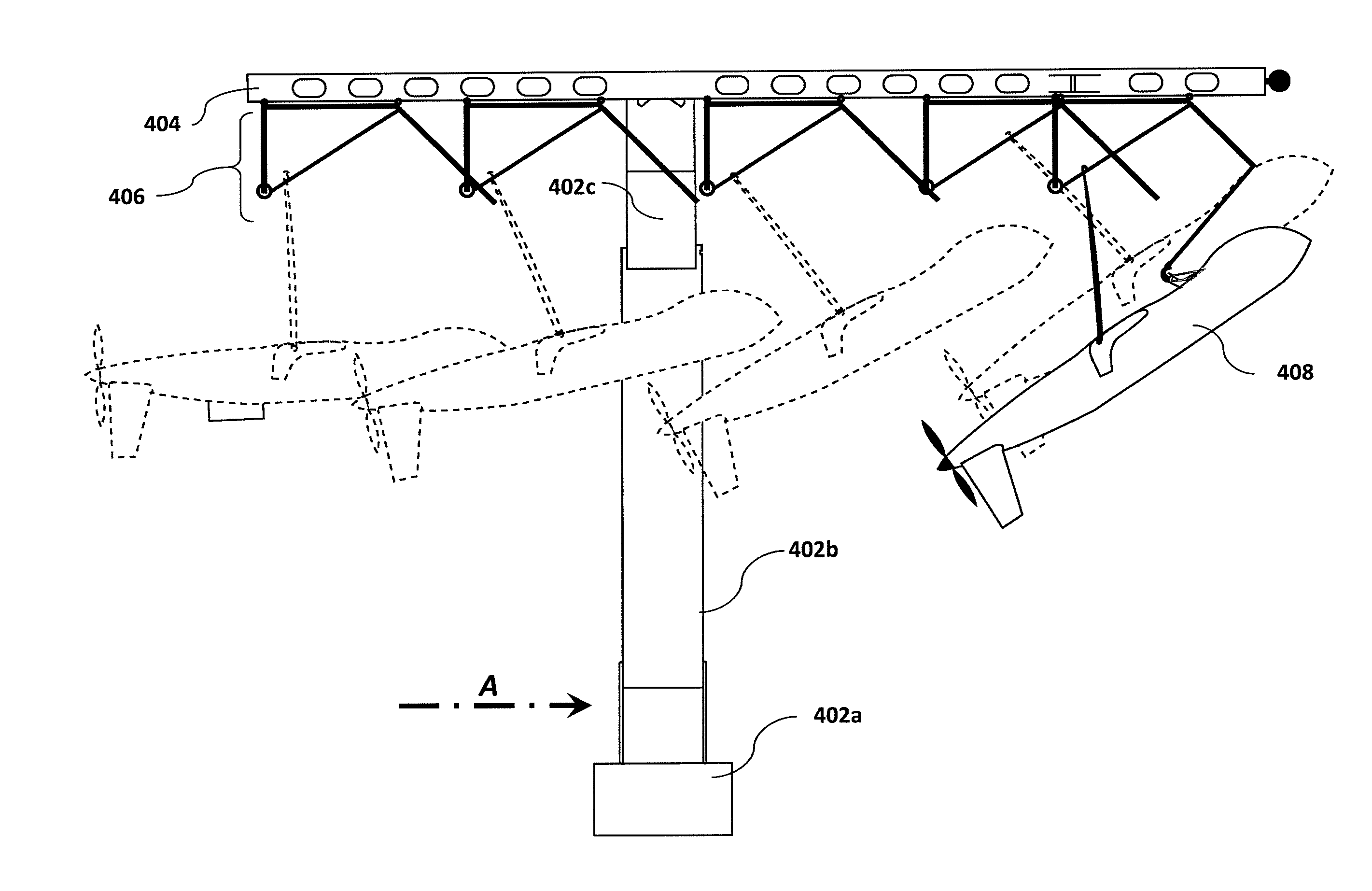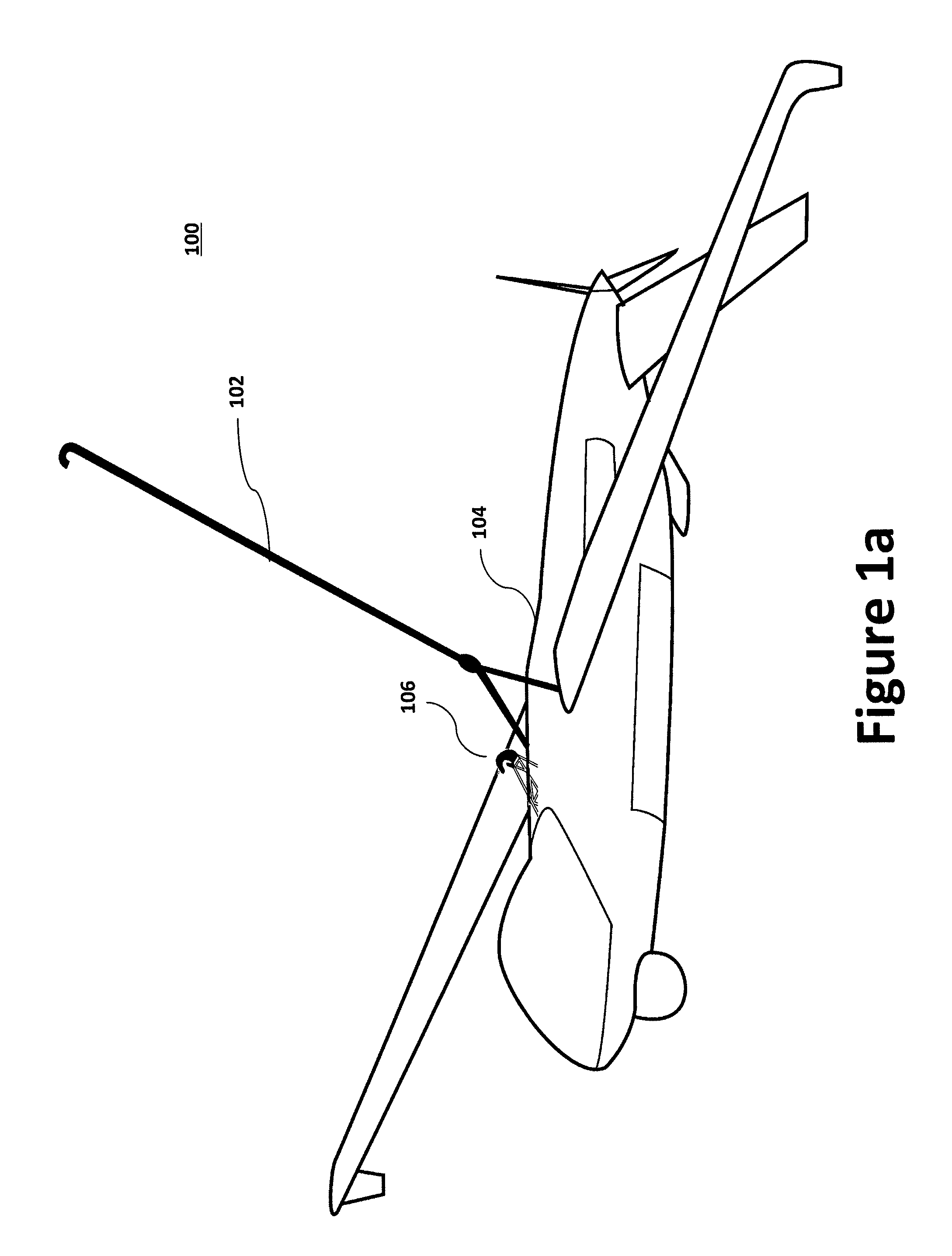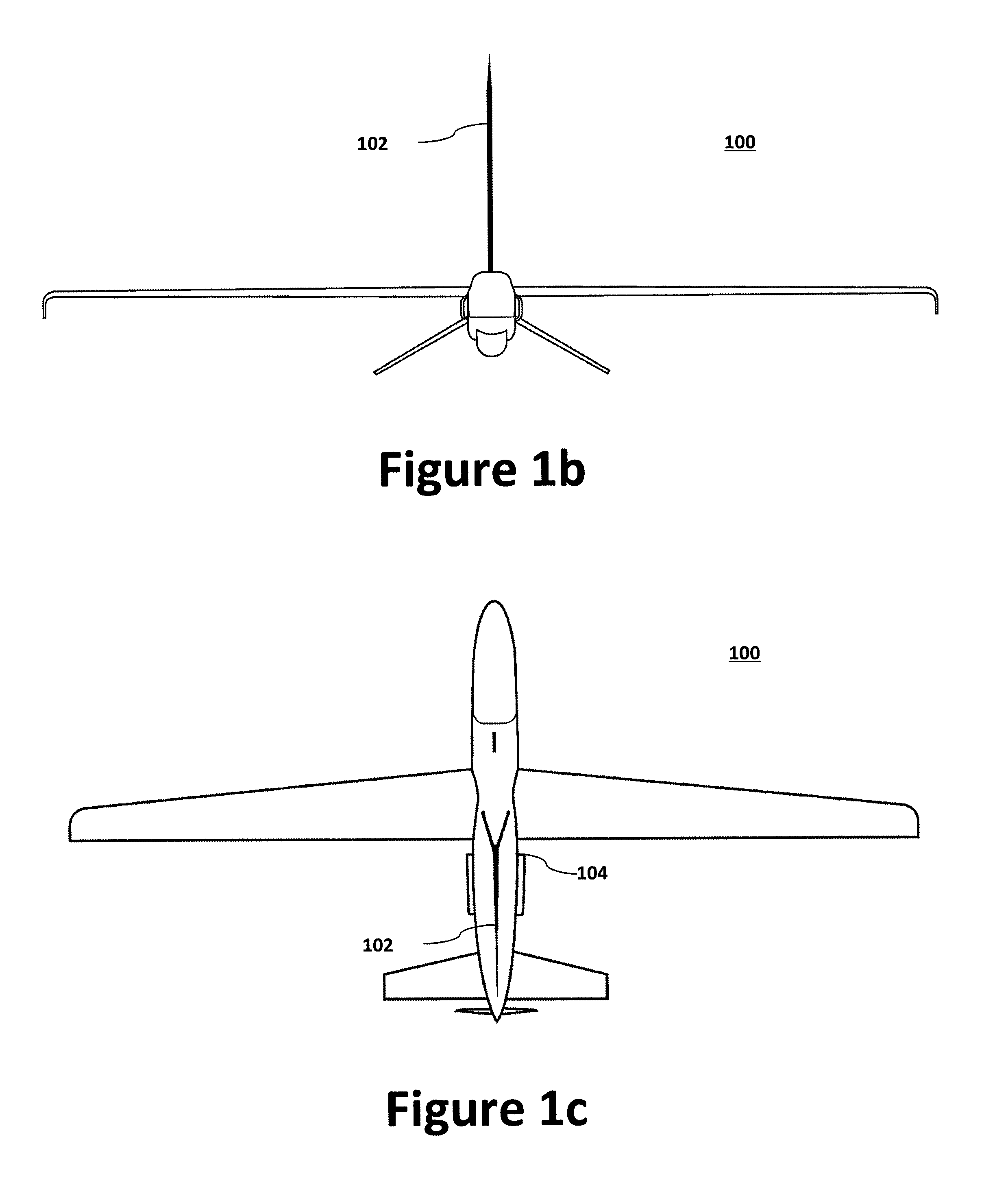Rail recovery system for aircraft
a rail recovery and aircraft technology, applied in the direction of aircrafts, transportation and packaging, and anchors, can solve the problems of not being able to facilitate the use of runways, vtol platforms, ineffective, and often lack of endurance, and achieve the effect of reducing the footprin
- Summary
- Abstract
- Description
- Claims
- Application Information
AI Technical Summary
Benefits of technology
Problems solved by technology
Method used
Image
Examples
Embodiment Construction
[0046]Embodiments of the present invention are described hereinbelow with reference to the accompanying drawings. In the following description, well-known functions or constructions are not described in detail because they would obscure the invention in unnecessary detail.
[0047]Because of continuing advancements in UAS and UAV technology, the use of UAVs has continued to grow. For example, the Aurora Perseus-N design offers excellent mission performance and, when in the stowed position, occupies only 64×470 inches of hangar space—roughly half the footprint of an MH-60 helicopter. Although UAVs such as the Perseus-N offer excellent mission performance in the air, when runways are unavailable, suitable mechanisms should be provided to facilitate launch and recovery. Therefore, as discussed below, UASs such as the Perseus-N may be configured to utilize a top-hook assembly with a side-arm recovery system to facilitate effective launch and recovery.
[0048]As discussed in greater detail be...
PUM
 Login to View More
Login to View More Abstract
Description
Claims
Application Information
 Login to View More
Login to View More - R&D
- Intellectual Property
- Life Sciences
- Materials
- Tech Scout
- Unparalleled Data Quality
- Higher Quality Content
- 60% Fewer Hallucinations
Browse by: Latest US Patents, China's latest patents, Technical Efficacy Thesaurus, Application Domain, Technology Topic, Popular Technical Reports.
© 2025 PatSnap. All rights reserved.Legal|Privacy policy|Modern Slavery Act Transparency Statement|Sitemap|About US| Contact US: help@patsnap.com



